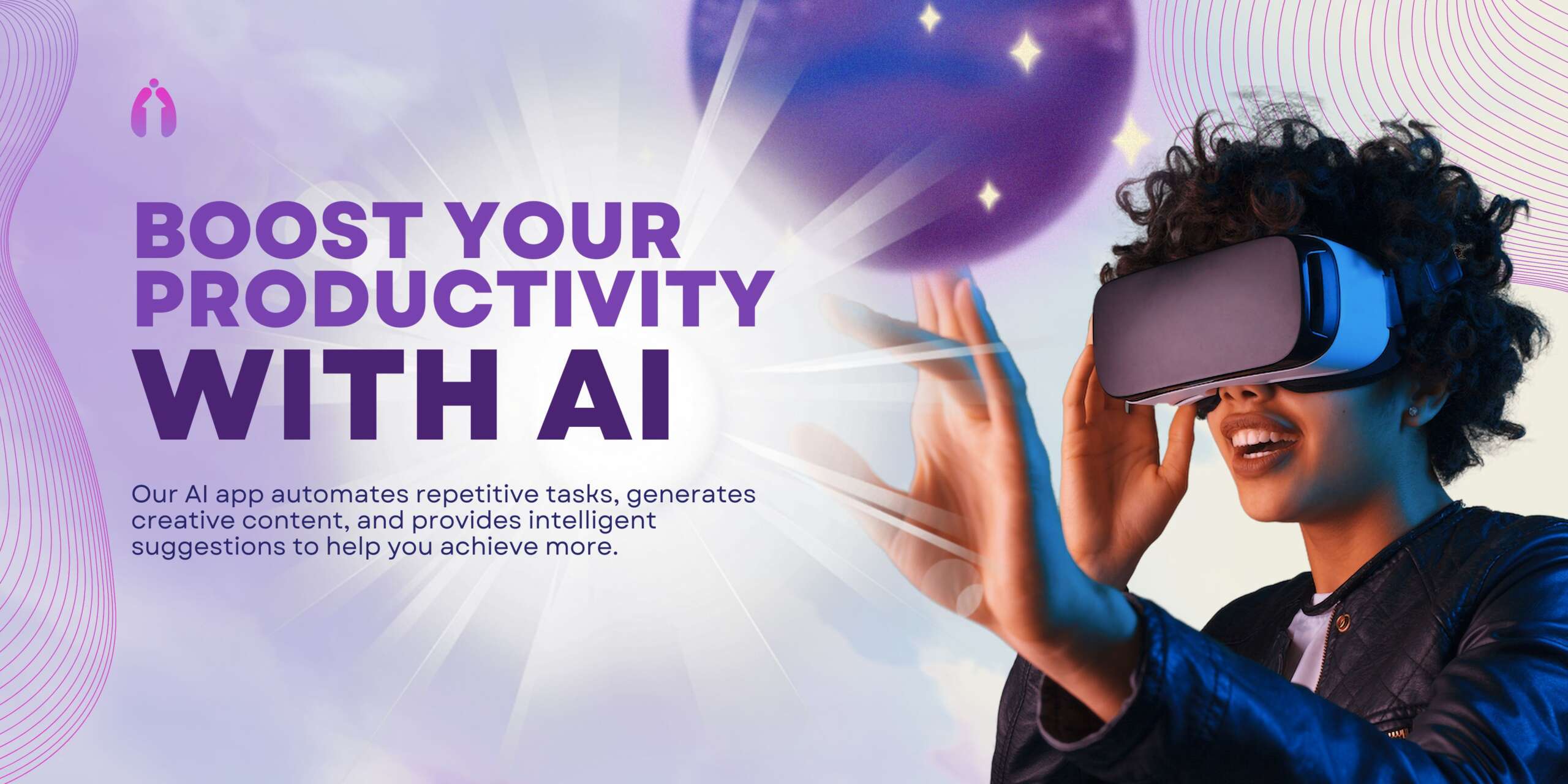The artificial intelligence revolution is transforming how businesses operate, with the AI market projected to grow from $200 billion in 2023 to $1.8 trillion by 2030. As organizations worldwide recognize AI’s potential to streamline operations and drive innovation, AI assistants have emerged as one of the most accessible entry points for businesses looking to harness this technology.
Whether you’re a startup looking to optimize workflows or an established enterprise seeking competitive advantages, integrating AI assistants into your business operations can unlock unprecedented levels of efficiency and productivity. This comprehensive guide will walk you through everything you need to know about implementing AI assistants successfully in your organization.
Understanding AI Assistants’ Role in Business
What Are AI Assistants in Business Context?
AI assistants are intelligent software systems designed to help automate tasks, provide information, and support decision-making processes within business environments. Unlike simple chatbots, modern AI assistants can understand context, learn from interactions, and perform complex operations across multiple business functions.
🔧 Rule-Based
Simple automation following predefined rules and workflows for consistent, predictable tasks
💬 Conversational
Natural language processing for customer interactions and support communications
🧠 Intelligent
Machine learning powered decision-making and predictive analysis capabilities
🤝 Collaborative
Human-AI partnership for complex problem solving and strategic planning
Key Business Functions Where AI Assistants Excel
Customer Service and Support AI assistants can handle customer inquiries 24/7, providing instant responses to frequently asked questions, processing orders, and escalating complex issues to human agents when necessary. This approach significantly reduces response times and improves customer satisfaction while allowing human agents to focus on more complex problem-solving.
Internal Process Automation By introducing custom virtual assistants, processes are shortened from months to hours and from hours to minutes. AI assistants excel at automating repetitive administrative tasks such as data entry, scheduling, document processing, and report generation.
Data Analysis and Insights Modern AI assistants can analyze large datasets, identify patterns, and provide actionable insights to support strategic decision-making. They can generate reports, create visualizations, and alert stakeholders to important trends or anomalies.
Sales and Marketing Support AI assistants can qualify leads, personalize marketing content, manage customer relationships, and provide sales teams with real-time insights about prospects and market trends.
AI Assistant Performance Dashboard
The Strategic Value Proposition
The integration of AI assistants delivers measurable business value through:
- Cost Reduction: Automating routine tasks reduces operational costs and allows staff to focus on high-value activities
- Improved Efficiency: AI assistants work continuously without breaks, significantly increasing processing speed and throughput
- Enhanced Accuracy: Reducing human error in repetitive tasks leads to higher quality outcomes
- Scalability: AI systems can handle increased workloads without proportional increases in costs
- Data-Driven Insights: AI assistants provide valuable analytics that inform better business decisions
How to Use AI Assistants for Different Use Cases?
💼 Sales
Lead scoring, CRM automation, sales forecasting, and customer insights
📢 Marketing
Content generation, campaign optimization, analytics, and personalization
👥 Human Resources
Recruitment screening, employee support, training, and performance analysis
💰 Finance
Expense management, financial analysis, reporting, and fraud detection
⚙️ Operations
Process automation, supply chain optimization, and quality control
🎧 Customer Service
24/7 support, ticket routing, knowledge base, and satisfaction tracking
Customer Experience Enhancement
Multi-Channel Support Implement AI assistants across various customer touchpoints including websites, mobile apps, social media platforms, and messaging services. This ensures consistent service quality and availability regardless of how customers choose to interact with your business.
Personalized Interactions AI assistants can analyze customer history, preferences, and behavior patterns to deliver personalized experiences. This includes product recommendations, customized support responses, and tailored content delivery.
Operations and Workflow Optimization
Document Processing and Management AI assistants can automatically categorize, extract information from, and route documents throughout your organization. This is particularly valuable for industries dealing with high volumes of paperwork such as legal, healthcare, and financial services.
Supply Chain Management AI assistants can monitor inventory levels, predict demand, optimize procurement processes, and alert managers to potential supply chain disruptions before they impact operations.
Project Management Support AI assistants can track project progress, identify bottlenecks, schedule meetings, and provide status updates to stakeholders, ensuring projects stay on track and within budget.
Human Resources and Talent Management
Recruitment and Onboarding AI assistants can screen resumes, schedule interviews, answer candidate questions, and guide new employees through onboarding processes. This reduces administrative burden on HR teams while providing consistent experiences for candidates and new hires.
Employee Support and Training Internal AI assistants can serve as always-available resources for employee questions about policies, procedures, and training materials. They can also track skill development and suggest relevant learning opportunities.
Financial Operations
Expense Management AI assistants can automatically categorize expenses, flag policy violations, and streamline approval workflows, making financial management more efficient and compliant.
Financial Analysis and Reporting AI assistants can generate real-time financial reports, identify spending patterns, and provide insights that support budgeting and forecasting decisions.
Sales and Marketing Automation
Lead Qualification and Nurturing AI assistants can score leads based on predefined criteria, engage prospects with personalized content, and schedule follow-up activities for sales teams.
Content Creation and Management AI assistants can generate marketing content, optimize messaging for different audiences, and manage content distribution across multiple channels.
Integrating AI Assistants Best Practices
Strategic Planning and Goal Setting
Define Clear Objectives Begin by mapping out your company’s existing processes. If you identify any bottlenecks, investigate further if it’s something that requires full human attention or can be fully handled (or simplified) with the help of AI. Start with specific, measurable goals rather than vague aspirations to “use AI.”
Prioritize Use Cases Not all business processes are equally suitable for AI automation. Focus on areas where AI can deliver the most significant impact with the least complexity. High-volume, repetitive tasks with clear decision criteria are ideal starting points.
Technical Implementation Strategy
Start Small and Scale Gradually Begin with pilot projects in low-risk areas to build confidence and expertise before expanding to mission-critical operations. This approach allows you to learn from early implementations and refine your strategy.
Ensure Data Quality and Accessibility AI assistants require high-quality, well-organized data to function effectively. Invest in data cleaning, integration, and governance processes before deploying AI solutions.
Choose the Right Technology Stack Select AI platforms and tools that align with your existing technology infrastructure and can integrate seamlessly with your current systems. Consider factors such as scalability, security, and vendor support.
Change Management and Training
Involve Stakeholders Early Engage employees, customers, and other stakeholders in the planning process to build buy-in and identify potential concerns before they become obstacles.
Provide Comprehensive Training Ensure that staff members understand how to work effectively with AI assistants. This includes both technical training on system operation and strategic training on how AI changes job roles and responsibilities.
Establish Clear Governance Develop policies and procedures for AI assistant usage, including data privacy protocols, decision-making authority, and escalation procedures for complex situations.
Performance Monitoring and Optimization
Implement Robust Analytics Track key performance indicators to measure the impact of AI assistant implementation. This includes efficiency metrics, cost savings, user satisfaction, and system reliability.
Continuous Improvement Process Regularly review AI assistant performance and user feedback to identify opportunities for optimization. AI systems can learn and improve over time, but they require ongoing attention and refinement.
Regular Security Audits Conduct periodic security assessments to ensure AI assistants remain secure and compliant with relevant regulations and industry standards.
Most Common Pitfalls of Integrating AI Assistants into Business Operations
Technical Implementation Failures
Inadequate Data Infrastructure Many organizations underestimate the data requirements for effective AI implementation. Poor data quality, insufficient data volume, or fragmented data systems can severely limit AI assistant effectiveness. Organizations must invest in robust data management practices before deploying AI solutions.
Over-Engineering Solutions In April 2024, New York City’s AI-powered chatbot, designed to help small business owners, came under fire for providing inaccurate and even unlawful guidance. This example illustrates the importance of matching AI complexity to actual business needs rather than implementing sophisticated solutions for simple problems.
Integration Challenges Failing to properly integrate AI assistants with existing systems creates information silos and workflow disruptions. Successful implementations require careful planning of system architecture and data flows.
Organizational and Cultural Resistance
Insufficient Change Management Employees might worry about their jobs, feel unsure about learning new skills, or get frustrated with changing workflows. Ignoring these concerns can lead to resistance and sabotage your efforts. Organizations must address human factors proactively through communication, training, and support.
Lack of Executive Support AI implementation requires sustained leadership commitment and resources. Without strong executive sponsorship, projects often stall when they encounter obstacles or require additional investment.
Unrealistic Expectations Setting unrealistic timelines or expecting immediate transformational results can lead to disappointment and project abandonment. Successful AI implementations require patience and iterative improvement.
Security and Compliance Risks
Data Privacy Violations AI assistants often process sensitive customer and business data. Organizations are more likely than in early 2024 to say their organizations are actively managing risks related to inaccuracy, cybersecurity, and intellectual property infringement. Failing to implement proper data protection measures can result in regulatory violations and customer trust issues.
Algorithmic Bias and Accuracy Issues As AI systems are increasingly integrated into critical decision-making processes, inaccuracies can have serious consequences such as misdiagnoses in healthcare, erroneous financial predictions, or biased hiring practices. Organizations must implement rigorous testing and monitoring to ensure AI assistant decisions are fair and accurate.
Overreliance on AI Systems Overdependence on AI and the potential for introducing inaccuracies and security issues into your codebase are common concerns. Maintaining human oversight and establishing clear boundaries for AI decision-making authority is crucial.
Strategic and Business Model Mistakes
Choosing Wrong Use Cases Implementing AI assistants for processes that require significant human judgment or creativity often leads to poor outcomes. Organizations should focus on well-defined, rule-based processes where AI can add clear value.
Vendor Lock-in Selecting proprietary AI platforms without considering long-term flexibility can limit future options and increase costs. Organizations should evaluate vendor independence and data portability when choosing AI solutions.
Inadequate ROI Planning Failing to establish clear metrics for measuring AI assistant value can make it difficult to justify continued investment or identify areas for improvement. Organizations should define success criteria before implementation begins.
Conclusion: Building Your AI-Powered Future
The successful integration of AI assistants into business operations represents more than just technological adoption—it’s a strategic transformation that can fundamentally improve how your organization operates and competes. As we’ve explored throughout this guide, the key to success lies not just in choosing the right technology, but in approaching implementation thoughtfully and systematically.
The businesses that will thrive in the AI-driven future are those that start today with clear objectives, realistic expectations, and a commitment to continuous learning and improvement. Whether you’re automating customer service, optimizing internal processes, or enhancing decision-making capabilities, AI assistants offer unprecedented opportunities to create value and competitive advantages.
Remember that AI implementation is a journey, not a destination. Start with pilot projects, learn from early experiences, and gradually expand your AI capabilities as you build expertise and confidence. By following the best practices outlined in this guide and avoiding common pitfalls, you’ll be well-positioned to harness the transformative power of AI assistants in your business.
The future belongs to organizations that can effectively combine human creativity and judgment with AI-powered efficiency and insights. Take the first step toward that future by beginning your AI assistant integration journey today.
Ready to implement AI assistants in your business? Start by identifying one specific process or workflow that could benefit from automation, and begin your transformation journey with a focused pilot project. The path to AI-powered success begins with a single step.



